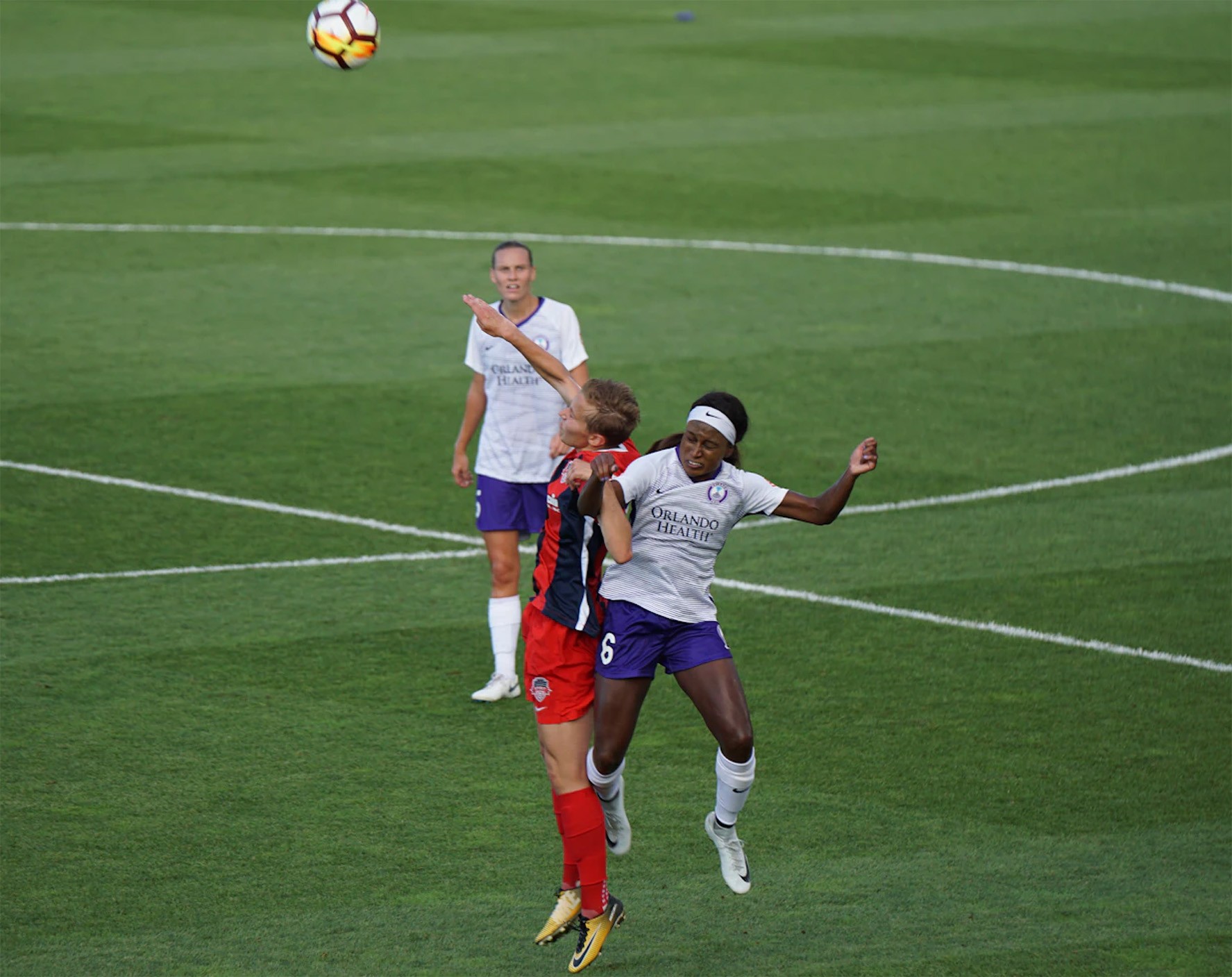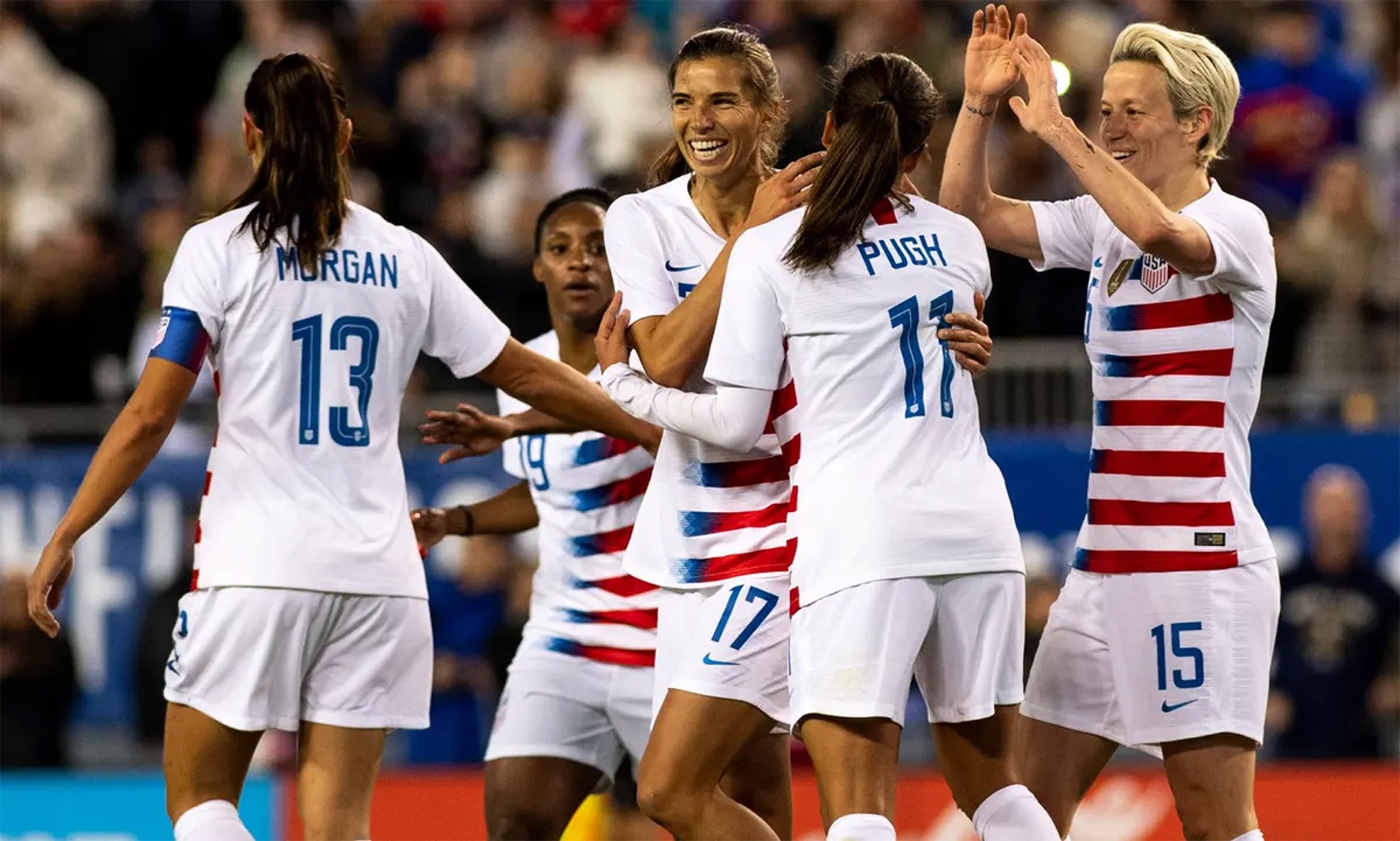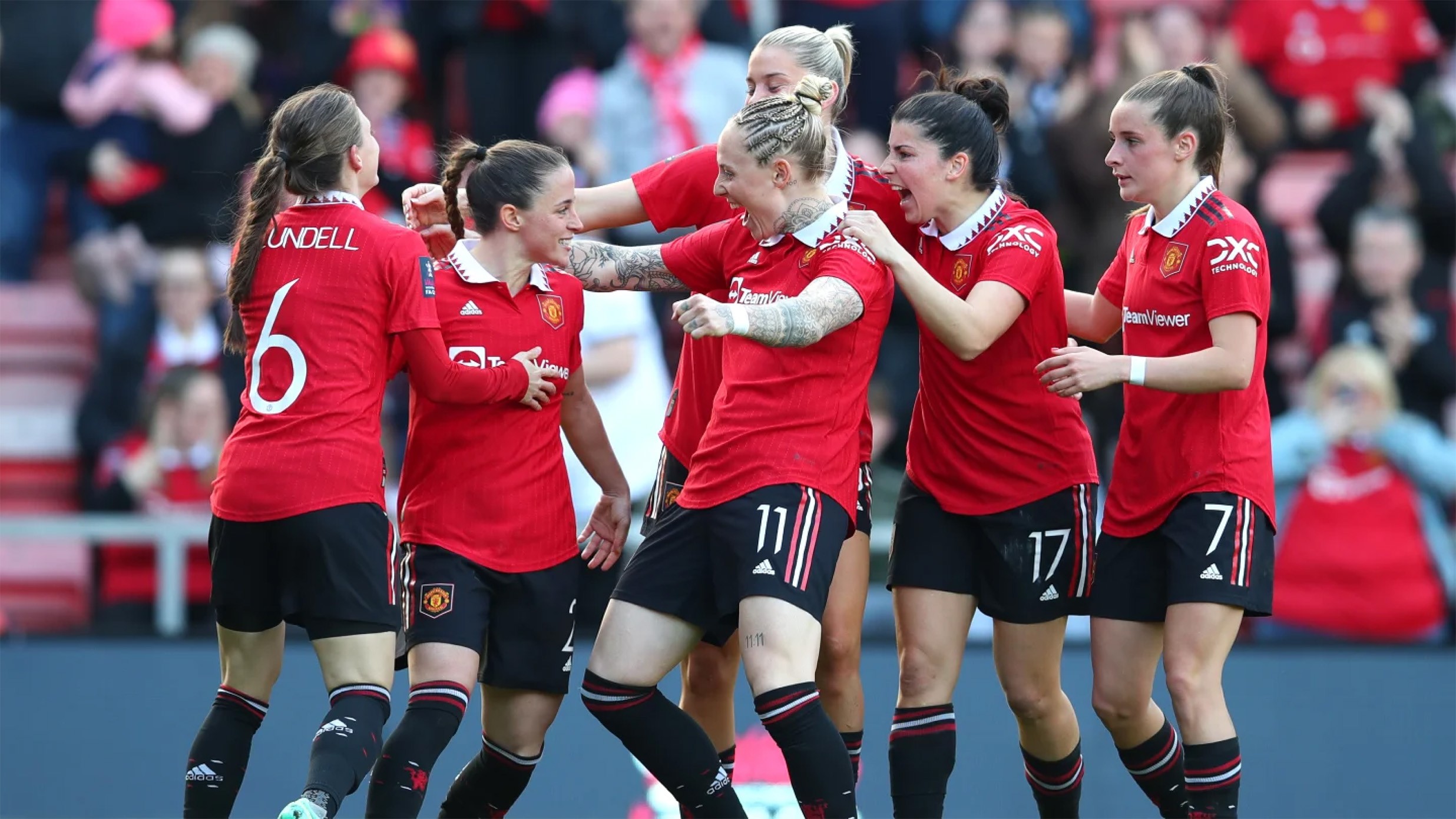
The Ascent of Women’s Sports: A New Era of Recognition and Investment
Historically, women’s sports have battled for equal recognition and funding compared to their male counterparts. However, recent years have marked a turning point. The 2019 FIFA Women’s World Cup broke viewership records with over 1 billion viewers, highlighting a global appetite for women’s sports. Investments continue to funnel into women’s leagues and teams, with celebrities and seasoned investors like Natalie Portman and Serena Williams backing the new Los Angeles-based women’s soccer team, Angel City FC.
The last decade has seen an unprecedented surge in the visibility, recognition, and valuation of women’s sports. From the U.S. Women’s National Soccer Team’s continued dominance to the exponential growth of the WNBA’s viewership and sponsorship deals, the landscape of women’s sports is undergoing a seismic shift. This transformation is not just a victory for gender equality but also a burgeoning opportunity for investors and marketers.
The commercial potential of women’s sports is becoming increasingly evident. According to a Nielsen Sports report, 84% of general sports fans are interested in women’s sports, a demographic not limited by gender. Sponsorship deals and media rights are becoming more lucrative, with brands like Visa committing to equal sponsorship for FIFA’s men’s and women’s World Cup. The economic ripple effect extends beyond the arenas, influencing merchandise, gaming, and other related sectors.

The Opportunity in Women’s Leagues, Clubs, & Rights
Investing in women’s sports leagues, clubs, and rights represents not only a celebration of sporting excellence but also a savvy financial strategy driven by diverse revenue opportunities and solid market fundamentals.
- Robust Fan Engagement: Women’s sports leagues, like the NWSL, demonstrate exceptional fan loyalty, evidenced by a +71% year-over-year viewership increase for the 2022 Championship match, showcasing the potential for revenue from ticket sales and merchandise.
- Expanding Revenue Streams: The NWSL’s significant sponsorship growth, from $2 million in 2020 to a projected $53 million by 2023, underlines the lucrative potential of investments in women’s sports through sponsorships and broadcasting agreements.
- Market Exclusivity and Growth: With a cap of 16 teams in the NWSL, investment opportunities in top-tier women’s sports are exclusive yet ripe for growth, providing a unique market advantage.
- Media Rights: Long-term deals are becoming more common, enhancing the value and stability of investments in women’s sports and opening up new revenue channels.
- Corporate Sponsorship: This remains an expanding area, offering vast potential for partnerships as companies look to associate with the positive values and increasing visibility of women’s sports.
These types of investments offer a blend of financial opportunity and cultural significance, tapping into the passion of millions of fans worldwide while presenting viable investment avenues for stakeholders seeking stable returns and long-term growth potential.
Manchester United is a powerful example of brand expansion and market engagement from men’s to women’s sports. Their approach highlights the potential of leveraging global brand recognition to enhance women’s divisions, driving fan engagement and worldwide support. By embracing digital innovation, Manchester United has maximized their online presence, opening new revenue streams and extending their reach. Their investment in community and youth engagement demonstrates a commitment to nurturing future talent and building a loyal fan base, offering a blueprint for women’s sports teams globally

While there are burgeoning opportunities for growth and engagement, several systemic challenges still persist. This transition underscores the importance of leveraging the lessons learned from successful sports organizations to address and overcome these obstacles toward unlocking the full potential of women’s sports.
Challenges
1. Gender Representation in Leadership
- Issue: Despite efforts towards gender balance, women occupy less than 40% of leadership roles in European sports organizations.
- Innovator in Action: The Female Coaching Network, founded by Vicky Huyton, aims to increase the number of women in sports leadership through coaching. The network provides resources, training, and support to female coaches worldwide, promoting their advancement into decision-making roles within sports organizations.
2. Equal Pay
- Issue: The gender pay gap in sports remains significant, with female athletes earning less than their male counterparts.
- Innovator in Action: Fair Play, initiated by former athlete and advocate Anna Kessel, is a campaign working toward closing the pay gap in sports. By collaborating with teams, leagues, and sponsors, Fair Play advocates for equitable pay structures and raises awareness of the financial disparities facing female athletes.
3. Media Coverage and Representation
- Issue: Women’s sports suffer from inadequate media coverage compared to men’s, limiting visibility and growth.
- Innovator in Action: PlayHer Sports Media, founded by journalist Rebecca Adams, focuses on increasing the exposure of women’s sports. Utilizing digital platforms, PlayHer curates and distributes content exclusively about female athletes, aiming to balance the representation in sports media.
Opportunities
1. Expanding Media Coverage
- Opportunity: Enhanced visibility of women’s sports can lead to greater popularity and support.
- Innovator in Action: She’s Got Game, a media startup co-founded by former athlete Laura Gentile, specializes in promoting women’s sports through diverse media channels. By showcasing the achievements and stories of female athletes, She’s Got Game seeks to change public perceptions and increase fan engagement.
2.Investing in Infrastructure and Training
- Opportunity: Equal access to facilities and resources can significantly improve conditions for female athletes.
- Innovator in Action: Equal Footing, founded by sports advocate Sarah Hillyer, is dedicated to providing female athletes with the same quality of training and facilities as their male counterparts. By building and renovating sports infrastructure for women, Equal Footing aims to level the playing field.
3. Leadership and Advocacy
- Opportunity: Promoting women into leadership positions can drive systemic change within the sports industry.
- Innovator in Action: Women Into Sports Leadership (WISL), led by CEO Helena Morrissey, is focused on increasing the representation of women in sports governance. Through mentorship programs, workshops, and advocacy, WISL strives to empower women to ascend into leadership roles, advocating for gender parity in sports administration.

Key Market Signals
1. Increased Investment in Women’s Leagues: The involvement of high-profile investors in teams like Angel City FC not only boosts financial support but also raises public awareness and interest in women’s sports. This trend, if sustained, could lead to a virtuous cycle of increased viewership, higher revenues, and greater overall investment in women’s leagues worldwide.
2. Policy Shifts and Quotas: The implementation of gender quotas and policy shifts in European sports organizations is setting a precedent that may encourage global sports entities to adopt similar measures. This could lead to a more diverse and inclusive leadership landscape, fostering different perspectives and approaches to the promotion and development of women’s sports on a global scale.
3. Technological Advancements and Digital Engagement: The adoption of new technologies and digital platforms for broadcasting and engaging with women’s sports is revolutionizing how fans interact with athletes and teams. This digital transformation can bridge geographical and cultural gaps, bringing a global audience closer to women’s sports, and potentially leveling the playing field with men’s sports in terms of visibility and fan engagement.
The trajectory of women’s sports is on an upward curve, with technological advancements and societal shifts promising to accelerate growth. The increasing integration of digital platforms in sports broadcasting and engagement offers new avenues for expansion and visibility. As societal attitudes continue to evolve, the coming years will likely witness a further dismantling of traditional barriers, ushering in a new era of equality and prosperity in the sports arena.
The ascent of women’s sports is not just a win for female athletes but a victory for our culture and society at large, highlighting the importance of diversity, equity, and inclusion. As stakeholders from various sectors continue to recognize and invest in the untapped potential of women’s sports, the industry is set for a transformative journey. The momentum is building, and the time to act is now. The growth of women’s sports is a tide that will lift many boats.

Danny Cortenraede is a global serial entrepreneur and investor. He is the founder of InStudio Ventures, based in Los Angeles, CA.
Recent Insights
The Ascent of Women’s Sports: A New Era of Recognition and Investment
Historically, women’s sports have battled for equal recognition and funding compared to their male counterparts. However, recent years have marked a turning point. The 2019 FIFA Women’s World Cup broke viewership records with over 1 billion viewers, highlighting a global appetite for women’s sports. Investments continue to funnel into women’s leagues and teams, with celebrities and seasoned investors like Natalie Portman and Serena Williams backing the new Los Angeles-based women’s soccer team, Angel City FC.
The last decade has seen an unprecedented surge in the visibility, recognition, and valuation of women’s sports. From the U.S. Women’s National Soccer Team’s continued dominance to the exponential growth of the WNBA’s viewership and sponsorship deals, the landscape of women’s sports is undergoing a seismic shift. This transformation is not just a victory for gender equality but also a burgeoning opportunity for investors and marketers.
The commercial potential of women’s sports is becoming increasingly evident. According to a Nielsen Sports report, 84% of general sports fans are interested in women’s sports, a demographic not limited by gender. Sponsorship deals and media rights are becoming more lucrative, with brands like Visa committing to equal sponsorship for FIFA’s men’s and women’s World Cup. The economic ripple effect extends beyond the arenas, influencing merchandise, gaming, and other related sectors.

The Opportunity in Women’s Leagues, Clubs, & Rights
Investing in women’s sports leagues, clubs, and rights represents not only a celebration of sporting excellence but also a savvy financial strategy driven by diverse revenue opportunities and solid market fundamentals.
- Robust Fan Engagement: Women’s sports leagues, like the NWSL, demonstrate exceptional fan loyalty, evidenced by a +71% year-over-year viewership increase for the 2022 Championship match, showcasing the potential for revenue from ticket sales and merchandise.
- Expanding Revenue Streams: The NWSL’s significant sponsorship growth, from $2 million in 2020 to a projected $53 million by 2023, underlines the lucrative potential of investments in women’s sports through sponsorships and broadcasting agreements.
- Market Exclusivity and Growth: With a cap of 16 teams in the NWSL, investment opportunities in top-tier women’s sports are exclusive yet ripe for growth, providing a unique market advantage.
- Media Rights: Long-term deals are becoming more common, enhancing the value and stability of investments in women’s sports and opening up new revenue channels.
- Corporate Sponsorship: This remains an expanding area, offering vast potential for partnerships as companies look to associate with the positive values and increasing visibility of women’s sports.
These types of investments offer a blend of financial opportunity and cultural significance, tapping into the passion of millions of fans worldwide while presenting viable investment avenues for stakeholders seeking stable returns and long-term growth potential.
Manchester United is a powerful example of brand expansion and market engagement from men’s to women’s sports. Their approach highlights the potential of leveraging global brand recognition to enhance women’s divisions, driving fan engagement and worldwide support. By embracing digital innovation, Manchester United has maximized their online presence, opening new revenue streams and extending their reach. Their investment in community and youth engagement demonstrates a commitment to nurturing future talent and building a loyal fan base, offering a blueprint for women’s sports teams globally

While there are burgeoning opportunities for growth and engagement, several systemic challenges still persist. This transition underscores the importance of leveraging the lessons learned from successful sports organizations to address and overcome these obstacles toward unlocking the full potential of women’s sports.
Challenges
1. Gender Representation in Leadership
- Issue: Despite efforts towards gender balance, women occupy less than 40% of leadership roles in European sports organizations.
- Innovator in Action: The Female Coaching Network, founded by Vicky Huyton, aims to increase the number of women in sports leadership through coaching. The network provides resources, training, and support to female coaches worldwide, promoting their advancement into decision-making roles within sports organizations.
2. Equal Pay
- Issue: The gender pay gap in sports remains significant, with female athletes earning less than their male counterparts.
- Innovator in Action: Fair Play, initiated by former athlete and advocate Anna Kessel, is a campaign working toward closing the pay gap in sports. By collaborating with teams, leagues, and sponsors, Fair Play advocates for equitable pay structures and raises awareness of the financial disparities facing female athletes.
3. Media Coverage and Representation
- Issue: Women’s sports suffer from inadequate media coverage compared to men’s, limiting visibility and growth.
- Innovator in Action: PlayHer Sports Media, founded by journalist Rebecca Adams, focuses on increasing the exposure of women’s sports. Utilizing digital platforms, PlayHer curates and distributes content exclusively about female athletes, aiming to balance the representation in sports media.
Opportunities
1. Expanding Media Coverage
- Opportunity: Enhanced visibility of women’s sports can lead to greater popularity and support.
- Innovator in Action: She’s Got Game, a media startup co-founded by former athlete Laura Gentile, specializes in promoting women’s sports through diverse media channels. By showcasing the achievements and stories of female athletes, She’s Got Game seeks to change public perceptions and increase fan engagement.
2.Investing in Infrastructure and Training
- Opportunity: Equal access to facilities and resources can significantly improve conditions for female athletes.
- Innovator in Action: Equal Footing, founded by sports advocate Sarah Hillyer, is dedicated to providing female athletes with the same quality of training and facilities as their male counterparts. By building and renovating sports infrastructure for women, Equal Footing aims to level the playing field.
3. Leadership and Advocacy
- Opportunity: Promoting women into leadership positions can drive systemic change within the sports industry.
- Innovator in Action: Women Into Sports Leadership (WISL), led by CEO Helena Morrissey, is focused on increasing the representation of women in sports governance. Through mentorship programs, workshops, and advocacy, WISL strives to empower women to ascend into leadership roles, advocating for gender parity in sports administration.

Key Market Signals
1. Increased Investment in Women’s Leagues: The involvement of high-profile investors in teams like Angel City FC not only boosts financial support but also raises public awareness and interest in women’s sports. This trend, if sustained, could lead to a virtuous cycle of increased viewership, higher revenues, and greater overall investment in women’s leagues worldwide.
2. Policy Shifts and Quotas: The implementation of gender quotas and policy shifts in European sports organizations is setting a precedent that may encourage global sports entities to adopt similar measures. This could lead to a more diverse and inclusive leadership landscape, fostering different perspectives and approaches to the promotion and development of women’s sports on a global scale.
3. Technological Advancements and Digital Engagement: The adoption of new technologies and digital platforms for broadcasting and engaging with women’s sports is revolutionizing how fans interact with athletes and teams. This digital transformation can bridge geographical and cultural gaps, bringing a global audience closer to women’s sports, and potentially leveling the playing field with men’s sports in terms of visibility and fan engagement.
The trajectory of women’s sports is on an upward curve, with technological advancements and societal shifts promising to accelerate growth. The increasing integration of digital platforms in sports broadcasting and engagement offers new avenues for expansion and visibility. As societal attitudes continue to evolve, the coming years will likely witness a further dismantling of traditional barriers, ushering in a new era of equality and prosperity in the sports arena.
The ascent of women’s sports is not just a win for female athletes but a victory for our culture and society at large, highlighting the importance of diversity, equity, and inclusion. As stakeholders from various sectors continue to recognize and invest in the untapped potential of women’s sports, the industry is set for a transformative journey. The momentum is building, and the time to act is now. The growth of women’s sports is a tide that will lift many boats.

Danny Cortenraede is a global serial entrepreneur and investor. He is the founder of InStudio Ventures, based in Los Angeles, CA.
Recent Insights

